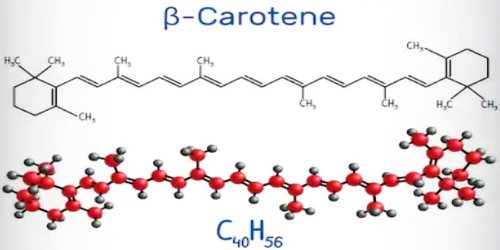According to new research published today (July 11, 2022) in the American Heart Association’s flagship journal Circulation, blood pressure levels considerably decreased among Chinese adults with high blood pressure who had a modified, heart-healthy, lower sodium traditional Chinese diet for four weeks.
Sodium reduction was an important component of the Chinese heart-healthy diet, which was based on the Dietary Approaches to Stop Hypertension (DASH) diet. A significant modifiable risk factor for high blood pressure is a poor diet, particularly one heavy in sodium.
“Compared with the nutrient composition of a usual Chinese diet in urban China, our heart-healthy diet of traditional Chinese cuisine cut sodium in half, from 6,000 mg daily to 3,000 mg daily, reduced fat intake and doubled dietary fiber. It also increased protein, carbohydrates and potassium,” said the first author and co-chair of the study team Yanfang Wang, Ph.D., a nutritionist and professorial research fellow at Peking University Clinical Research Institute in Beijing, China.
More than one-fifth of all people on earth, according to the survey, are Chinese. Similar to other regions of the world, China has experienced a sharp rise in the burden of cardiovascular disease in recent years. Increases in cardiovascular disease have been largely attributed to unhealthful changes in Chinese diet.
According to a 2012 China National Nutrition Survey, consumption of healthy foods such as grains (34%), tubers and legumes (80%), and vegetables and fruits (15%) decreased significantly. In contrast, consumption of meat (162%), eggs (233%), and edible oil (132%) increased dramatically over the same time.
“Chinese people who live in the U.S. and elsewhere often maintain a traditional Chinese diet, which is very different from a Western diet,” said the chair of the study team Yangfeng Wu, M.D., Ph.D., professor of epidemiology and sciences in clinical research at Peking University Clinical Research Institute in Beijing, China. “Healthy Western diets such as DASH and Mediterranean have been developed and proven to help lower blood pressure, however, until now, there has not been a proven heart-healthy diet developed to fit into traditional Chinese cuisine.”
Compared with the nutrient composition of a usual Chinese diet in urban China, our heart-healthy diet of traditional Chinese cuisine cut sodium in half, from 6,000 mg daily to 3,000 mg daily, reduced fat intake and doubled dietary fiber. It also increased protein, carbohydrates and potassium.
Yanfang Wang
In the study, 265 Chinese adults with systolic blood pressure of at least 130 mm Hg and an average age of 56 were included. Nearly half of the participants were women and slightly more than half were taking at least one medication to lower their blood pressure at the start of the study.
Participants were recruited from Beijing, Shanghai, Guangzhou and Chengdu. These are four major cities in China, each with a corresponding regional cuisine: Shangdong, Huaiyang, Cantonese and Szechuan, respectively.
In order for researchers to determine whether the effects of the heart-healthy diet would be applicable and sustainable to various Chinese dietary cultures, the Chinese heart-healthy diet was developed with catering organizations in those regions and conformed to the four regional cuisines. Since salt has been used for cooking and food preservation in traditional Chinese cuisine for thousands of years, this can occasionally be difficult.
This is particularly true in northern China, where people had to eat salt-preserved vegetables during the winter and spring because there were few greens available due to the region’s harsh climate. For this reason, residents of northern China consume considerably more sodium.
All participants followed their local, customary diets for seven days prior to the study’s start in order to customize the new eating regimens for taste and flavor. While adjusting the nutrient intake to be heart-healthy, researchers wanted the heart-healthy diet to taste as much like the participants’ regular diets as possible.
After the initial 7 days of eating their usual diet, 135 of the adults were randomly selected to consume the new Chinese heart-healthy diet for 28 days, and the remaining 130 participants ate meals from their usual cuisine.
Depending on group assignment, meals were either regular or the heart-healthy versions of Shangdong, Huaiyang, Cantonese and Szechuan cuisine. Study participants and blood pressure assessors were not aware of which dietary group the participants were assigned.
The participants’ blood pressure was checked before, after, and once a week while the trial was ongoing. To determine the amount of nutrients consumed at each meal, food items for each dish were weighed.
At the beginning and conclusion of the trial, urine samples were taken to assess the intake of salt and potassium. The findings suggested that the Chinese heart-healthy diet may have a significant blood pressure-lowering effect and be compatible with drugs for hypertension.
The study found:
- Participants who ate the Chinese heart-healthy diet had lower blood pressure, with the systolic (top number) blood pressure lowered by an average 10 mm Hg, and diastolic blood pressure fell by an average 3.8 mm Hg, compared to the group who ate regular cuisine.
- In the heart-healthy group, calorie intake from carbohydrates (8%) and protein (4%) increased and from fat decreased (11%). Consumption of fiber (14 grams), potassium (1,573 mg), magnesium (194 mg) and calcium (413 mg) increased, while sodium decreased (2,836 mg). However, the group who followed a typical diet had essentially little change in their nutrient consumption during the trial.
- The Chinese heart-healthy diet’s flavor and taste preferences were comparable to those of the typical local diet, and participants consumed comparable amounts of food and gave both diets excellent ratings.
- The additional cost of the heart-healthy Chinese diet was about 4 RMB (equivalent to $0.60 USD) more per day, per person, on average, when compared to the usual local diet. That was considered low and generally affordable.
- The four heart-healthy Chinese cuisine groups’ members all experienced a decrease of blood pressure.
These findings, according to researchers, point to the potential for the heart-healthy Chinese diet to lower major cardiovascular disease by 20%, heart failure by 28%, and all-cause mortality by 13% if sustained.
“Health professionals should recommend a heart-healthy diet with low sodium and high potassium, fiber, vegetables and fruits as the first-line treatment to their patients with high blood pressure,” Wu said. “Because traditional Chinese dietary culture and cooking methods are often used wherever Chinese people live, I believe a heart-healthy Chinese diet and the principles that we used for developing the diet would be helpful for Chinese Americans as well.”
American Heart Association volunteer expert Lawrence J. Appel, M.D., M.P.H., FAHA, noted, “The results of this trial are truly impressive and provide a roadmap on healthy eating to people consuming a variety of Chinese cuisines Shangdong, Huaiyang, Cantonese or Szechuan cuisines. Major public health efforts are warranted in order to ‘scale up’ throughout China in order to achieve population-wide reductions in blood pressure.”
Appel is vice chair of the writing group for the American Heart Association’s 2021 scientific statement, Dietary Guidance to Improve Cardiovascular Health. The recommendations urge limiting salt, sugar, animal fat, processed foods, and alcohol while consuming whole grains, a variety of fruits and vegetables, lean and plant-based protein, and whole grains. These recommendations should be followed wherever food is prepared or consumed.
A limitation of the study is that the heart-healthy Chinese diet was tested for only four weeks. A longer study period may confirm and possibly even strengthen these results, according to Wu.
The study was funded by the National Key Research and Development Program of the Ministry of Science and Technology of China (MOST).
















